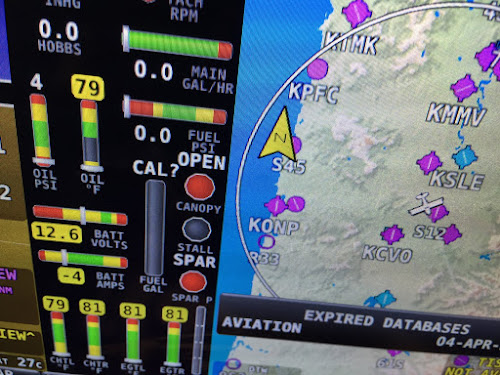Reference: Notifications dated 8/31/12 and 2/11/13; 1.5 hours
I've been going through and checking the documentation of all the service bulletin and notifications for the RV-12 and preparing logbook entries for these. In my search, I came across two older notifications dealing with the electrical harness. Both apply to my RV-12 airplane because of the date these harnesses were received.
UPDATE: There is a GOTCHA for Notification 2/11/13. Even though my harness fit the dates of the Notification, so I changed the wires, the harness was correct before the change. Swapping the wires caused the problem outlined in the notification. So check the light operation first before changing the wiring!
Reference: Notification dated 8/31/12
This notification requires swapping two of the wires in the WH-00045 or WH-00026 harness. It depends on which Skyview harness system you have. Mine is the older conversion from the D-180 EFIS to the Skyview so it involves the WH-00026.
In light of the problem I had with the other wiring notification I called Van's to find out if there was any test that would show if these two wires needed changing or not. I was told if the wires are backwards then the Skyveiw will give a 4/8 error message.

 Reference: Notification dated 2/11/13
This notification dealt with to wires that needed to be changed in the lighting harness WH-00031. Again my airplane was included because the harness was received before 2/11/13. The two wire are extracted using a extractor tool and swapped.
As noted above: I had to reverse the wires back to the original configuration as my wiring harness was wired correctly to start with.
Reference: Notification dated 2/11/13
This notification dealt with to wires that needed to be changed in the lighting harness WH-00031. Again my airplane was included because the harness was received before 2/11/13. The two wire are extracted using a extractor tool and swapped.
As noted above: I had to reverse the wires back to the original configuration as my wiring harness was wired correctly to start with.

This completes the work
and rework for these two notifications on the RV-12 airplane.



